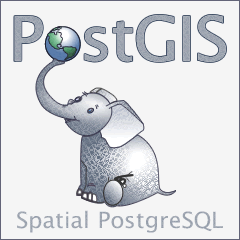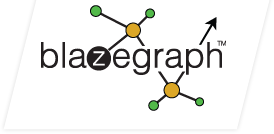RCC8 use in GeoSPARQL
RCC8 has been implemented in GeoSPARQL as described below:

GeoSPARQL is a standard for representation and querying of geospatial linked data for the Semantic Web from the Open Geospatial Consortium (OGC). [1] The definition of a small ontology based on well-understood OGC standards is intended to provide a standardized exchange basis for geospatial RDF data which can support both qualitative and quantitative spatial reasoning and querying with the SPARQL database query language. [2]
The Ordnance Survey Linked Data Platform uses OWL mappings for GeoSPARQL equivalent properties in its vocabulary. [3] [4] The LinkedGeoData data set is a work of the Agile Knowledge Engineering and Semantic Web (AKSW) research group at the University of Leipzig, [5] a group mostly known for DBpedia, that uses the GeoSPARQL vocabulary to represent OpenStreetMap data.
In particular, GeoSPARQL provides for:
The following example SPARQL query could help model the question "What is within the bounding box defined by 38°54′49″N77°05′20″W / 38.913574°N 77.089005°W and 38°53′11″N77°01′48″W / 38.886321°N 77.029953°W ?" [6]
PREFIXgeo:<http://www.opengis.net/ont/geosparql#>PREFIXgeof:<http://www.opengis.net/def/function/geosparql/>SELECT?whatWHERE{?whatgeo:hasGeometry?geometry.FILTER(geof:sfWithin(?geometry,"POLYGON((-77.089005 38.913574,-77.029953 38.913574,-77.029953 38.886321,-77.089005 38.886321,-77.089005 38.913574))"^^geo:wktLiteral))}RCC8 has been implemented in GeoSPARQL as described below:

There are (almost) no complete implementations of GeoSPARQL; however, there are partial or vendor implementations of GeoSPARQL. Currently there are the following implementations:
Benchmarking GeoSPARQL 1.0 and geospatial-enabled triplestores, in general, has been conducted using several approaches. One can distinguish between performance and compliance benchmarks. The former can reveal whether a triplestore gives a timely answer to a GeoSPARQL query and may or may not check the answer for correctness. The latter checks whether a triplestore gives compliant answers with respect to the definitions of the GeoSPARQL 1.0 standard irrespective of the time the query takes for execution.
Well-known geospatial performance benchmarks include the Geographica [17] and Geographica 2 [18] benchmarks which track the performance of predefined sets of queries on synthetic and real-world datasets. They each test a subset of GeoSPARQL query functions for performance. Another performance benchmark by Huang et al. [19] assessed the performance of GeoSPARQL-enabled triple stores as part of a spatial data infrastructure.
Compliance benchmarking of OGC standards is usually conducted as part of the OGC Team Engine Test Suite [20] which allows companies to obtain certification for implementing certain OGC specifications correctly. As of 2021, however, the OGC Team Engine does not provide a set of compliance tests to test GeoSPARQL compliance. Nevertheless, in 2021, Jovanovik et al. [21] developed the first comprehensive, reproducible GeoSPARQL Compliance benchmark in which nine different triple stores were initially tested. The results of these first compliance tests along with the software [22] are available on Github. [23]
The GeoSPARQL standard was submitted to the OGC by:
With regards to future work, the GeoSPARQL standard states:
Obvious extensions are to define new conformance classes for other standard serializations of geometry data (e.g. KML, GeoJSON). In addition, significant work remains in developing vocabularies for spatial data, and expanding the GeoSPARQL vocabularies with OWL axioms to aid in logical spatial reasoning would be a valuable contribution. There are also large amounts of existing feature data represented in either a GML file (or similar serialization) or in a datastore supporting the general feature model. It would be beneficial to develop standard processes for converting (or virtually converting and exposing) this data to RDF.
In 2019, the OGC's GeoSemantics Domain Working Group [24] set out to assess the current usage of GeoSPARQL in different domains in the White Paper "OGC Benefits of Representing Spatial Data Using Semantic and Graph Technologies" [25] and collected initial feature requests to extend GeoSPARQL.
This led to the re-establishment of the GeoSPARQL Standards Working Group with a newly formed working group charter in September 2020. [26] [27] The group is working towards a new release of the GeoSPARQL standard, with non-breaking changes - GeoSPARQL 1.1 - in the summer of 2021, the development of which can be followed on Github.
At the GeoLD workshop 2021, held as part of the Extended Semantic Web Conference 2021, an outline of the additions which are likely to be present in GeoSPARQL 1.1 has been presented. [28] The changes have been further consolidated and summarized in a publication in the ISPRS International Journal of GeoInformation. [29]

PostGIS is an open source software program that adds support for geographic objects to the PostgreSQL object-relational database. PostGIS follows the Simple Features for SQL specification from the Open Geospatial Consortium (OGC).
RDF Schema (Resource Description Framework Schema, variously abbreviated as RDFS, RDF(S), RDF-S, or RDF/S) is a set of classes with certain properties using the RDF extensible knowledge representation data model, providing basic elements for the description of ontologies. It uses various forms of RDF vocabularies, intended to structure RDF resources. RDF and RDFS can be saved in a triplestore, then one can extract some knowledge from them using a query language, like SPARQL.
SPARQL is an RDF query language—that is, a semantic query language for databases—able to retrieve and manipulate data stored in Resource Description Framework (RDF) format. It was made a standard by the RDF Data Access Working Group (DAWG) of the World Wide Web Consortium, and is recognized as one of the key technologies of the semantic web. On 15 January 2008, SPARQL 1.0 was acknowledged by W3C as an official recommendation, and SPARQL 1.1 in March, 2013.
Simple Features is a set of standards that specify a common storage and access model of geographic features made of mostly two-dimensional geometries used by geographic databases and geographic information systems. It is formalized by both the Open Geospatial Consortium (OGC) and the International Organization for Standardization (ISO).
A spatial database is a general-purpose database that has been enhanced to include spatial data that represents objects defined in a geometric space, along with tools for querying and analyzing such data.
Oracle Spatial and Graph, formerly Oracle Spatial, is a free option component of the Oracle Database. The spatial features in Oracle Spatial and Graph aid users in managing geographic and location-data in a native type within an Oracle database, potentially supporting a wide range of applications — from automated mapping, facilities management, and geographic information systems (AM/FM/GIS), to wireless location services and location-enabled e-business. The graph features in Oracle Spatial and Graph include Oracle Network Data Model (NDM) graphs used in traditional network applications in major transportation, telcos, utilities and energy organizations and RDF semantic graphs used in social networks and social interactions and in linking disparate data sets to address requirements from the research, health sciences, finance, media and intelligence communities.
An RDF query language is a computer language, specifically a query language for databases, able to retrieve and manipulate data stored in Resource Description Framework (RDF) format.
Ontotext is a software company with offices in Europe and USA. It is the semantic technology branch of Sirma Group. Its main domain of activity is the development of software based on the Semantic Web languages and standards, in particular RDF, OWL and SPARQL. Ontotext is best known for the Ontotext GraphDB semantic graph database engine. Another major business line is the development of enterprise knowledge management and analytics systems that involve big knowledge graphs. Those systems are developed on top of the Ontotext Platform that builds on top of GraphDB capabilities for text mining using big knowledge graphs.

Apache Jena is an open source Semantic Web framework for Java. It provides an API to extract data from and write to RDF graphs. The graphs are represented as an abstract "model". A model can be sourced with data from files, databases, URLs or a combination of these. A model can also be queried through SPARQL 1.1.

Eclipse RDF4J is an open-source framework for storing, querying, and analysing RDF data. It was created by the Dutch software company Aduna as part of "On-To-Knowledge", a semantic web project that ran from 1999 to 2002. It contains implementations of an in-memory triplestore and an on-disk triplestore, along with two separate Servlet packages that can be used to manage and provide access to these triplestores, on a permanent server. The RDF4J Rio package contains a simple API for Java-based RDF parsers and writers. Parsers and writers for popular RDF serialisations are distributed along with RDF4J, and users can easily extend the list by putting their parsers and writers on the Java classpath when running their application.
A semantic reasoner, reasoning engine, rules engine, or simply a reasoner, is a piece of software able to infer logical consequences from a set of asserted facts or axioms. The notion of a semantic reasoner generalizes that of an inference engine, by providing a richer set of mechanisms to work with. The inference rules are commonly specified by means of an ontology language, and often a description logic language. Many reasoners use first-order predicate logic to perform reasoning; inference commonly proceeds by forward chaining and backward chaining. There are also examples of probabilistic reasoners, including non-axiomatic reasoning systems, and probabilistic logic networks.
A triplestore or RDF store is a purpose-built database for the storage and retrieval of triples through semantic queries. A triple is a data entity composed of subject–predicate–object, like "Bob is 35" or "Bob knows Fred".
AllegroGraph is a closed source triplestore which is designed to store RDF triples, a standard format for Linked Data. It also operates as a document store designed for storing, retrieving and managing document-oriented information, in JSON-LD format. AllegroGraph is currently in use in commercial projects and a US Department of Defense project. It is also the storage component for the TwitLogic project that is bringing the Semantic Web to Twitter data.

The Open Geospatial Consortium (OGC), an international voluntary consensus standards organization for geospatial content and location-based services, sensor web and Internet of Things, GIS data processing and data sharing. It originated in 1994 and involves more than 500 commercial, governmental, nonprofit and research organizations in a consensus process encouraging development and implementation of open standards.

Apache Marmotta is a linked data platform that comprises several components. In its most basic configuration it is a Linked Data server. Marmotta is one of the reference projects early implementing the new Linked Data Platform recommendation that is being developed by W3C.
Semantic queries allow for queries and analytics of associative and contextual nature. Semantic queries enable the retrieval of both explicitly and implicitly derived information based on syntactic, semantic and structural information contained in data. They are designed to deliver precise results or to answer more fuzzy and wide open questions through pattern matching and digital reasoning.
NitrosBase is a Russian high-performance multi-model database system. The database system supports relational, graph and document database models.

Blazegraph is an open source triplestore and graph database, developed by Systap, which is used in the Wikidata SPARQL endpoint and by other large customers. It is licensed under the GNU GPL.

Ontotext GraphDB is a graph database and knowledge discovery tool compliant with RDF and SPARQL and available as a high-availability cluster. Ontotext GraphDB is used in various European research projects.